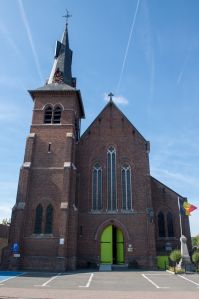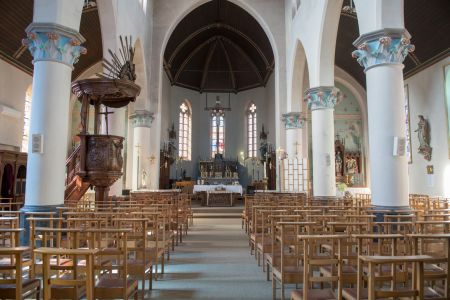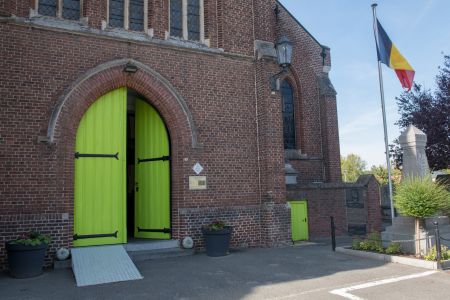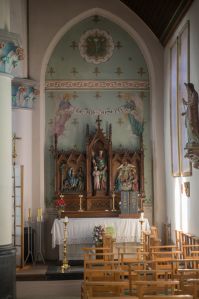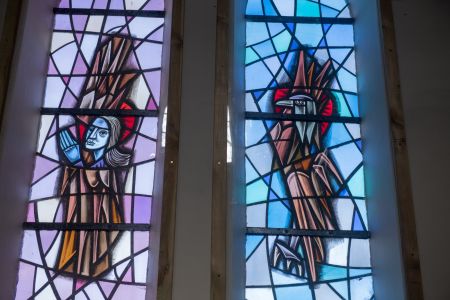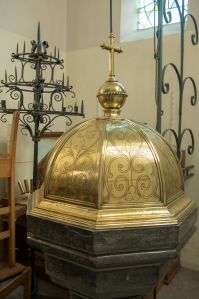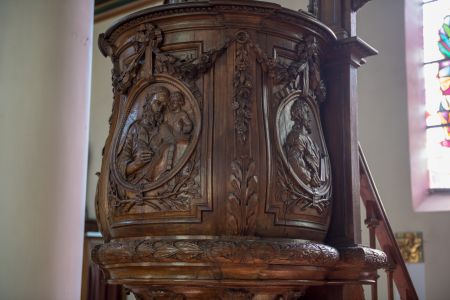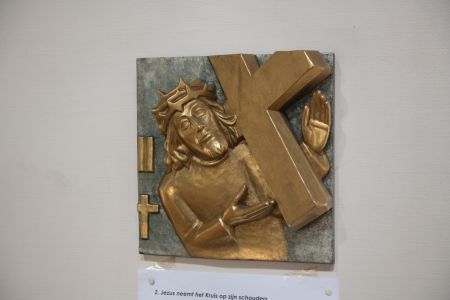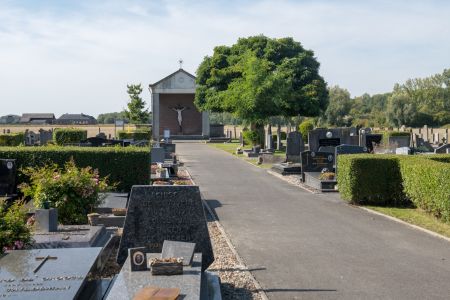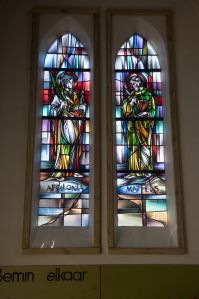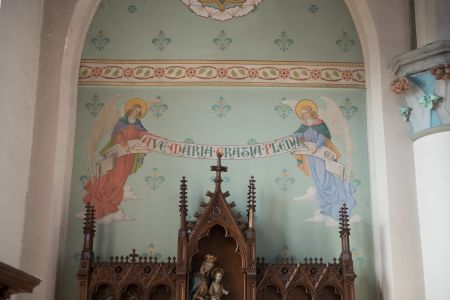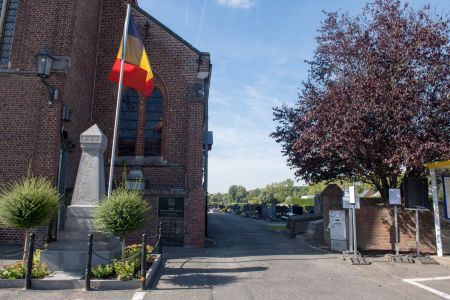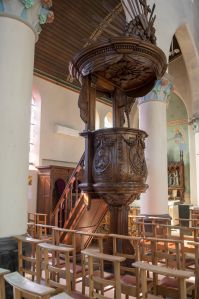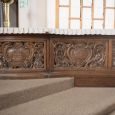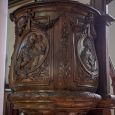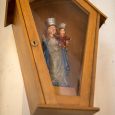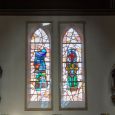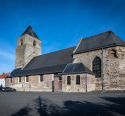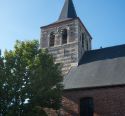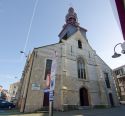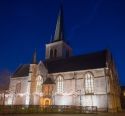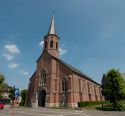Church | 1875 | | Catholic Church


Map
Opening hours
01 May - 01 September
Mon 9.00 - 19.00
Tue 9.00 - 19.00
Wed 9.00 - 19.00
Thu 9.00 - 19.00
Fri -
Sat -
Sun 9.00 - 12.00
Religious offices
Wednesday 8.30 am
Description
The church, with neo-gothic interior, dates from 1875-81, and was designed by the architect Van Hoecke-Peeters. He was a well known government architect (schools and city halls) as well as a religious builder (f.e. Our Lady of Lourdes in Oostakker). In Munkzwalm he was instructed to replace the small and ruinous single-bay roman church. He designed a brick three-aisled building of four bays long, with the typical pointed arch windows in neo-gothic tracery.
The interior mainly dated from the construction period, with also a Mechels sculpture Our Lady with Child from around the year 1600. The restored oak confessional dates from around 1650. The oak main altar contains polychrome painted sculptural groups (1900). Above the two neo-gothic side altars you can see new murals have been placed. Further: oak choir stalls, an altar rail, a pulpit etc. In the tradition of the gothic revival. Sixteen of the nineteen stained glasses were added in 1983.
Two of the bluestone bricks refer to the beginning of the construction works. Those times, the mayor, who also was the chairman of the church council, had a quarrel with the priest Verstraete, which resulted in the removal of the name of the priest from tje first brick. Therefore the bishop of Gent refused to consecrate the new church as long as that name was not restored. Eventually the two parties found a compromise: on the outer facade they placed a new brick with the name on it.
In the surrounding cemetery you can find a tombstome, which dates from the 18th Century, originating from the first church. The Zuidlaan, by the church, connects the picturesque Zwalm stream with the village. Close to the Zwalm mill you can find the memorial for the writer Omer Wattez, a man who glorified this region.
KIKIRPA : Photo-library online
Photos
Remarkable elements
Main and side altars
Main altar in oak with polychrome painted sculpture groups by R. Van Caelenbergh from Aalst, from ca. 1900.
The neo-gothic side altars in oak, dedicated to Our Lady and Saint-Joseph were placed in 1912 by Van den Eynde from the city of Ghent. Above the side altars, one can see neo-gothic painted murals on canvas by R. Goethals and further remnants of the in 1900 applied polychromy.Communion rails
The oak communion rails from the 3rd quarter of the 18th century in Louis XV style were brought over from the old church and restored in 1911-12. There are five openwork rococo panels with a remarkable representation of Old Testament and Eucharistic symbols: the showbread, the fish and the loaves of feeding the multitude, the Lamb of God on the Book with Seven Seals, a fountain with two dolphins, and the manna rain.
Pulpit
Oak pulpit in Louis XVI style from the middle of the 18th century, restored and partially renewed by Van den Eynde in 1912. It is formed by four slim volutes that are placed crosswise around the round pedestal. The base is somewhat vaulted with a laurel wreath at the base, on the four panels there’s a medallion with the bust of one of the four Evangelists, leaves, garlands and bows. The sounding board has block work with draperies, trophy with cross and halo, the Tablets of the Law, the gospel book, and two cherubs.
Statue of Our Lady of Consolation
Wooden statue from the city of Mechelen of Our Lady with Child called Our Lady of Consolation, of ca. 1600. It was gilded at the beginning of the 20th century and more recently polychromed. According to the church bills of 1636-1637, the statue was transported along the Scheldt river to the village of Hermelgem.
Stained glass windows
The three stained glass windows of ca. 1880 that one can find in the choir created by Coucke from the city of Bruges show Our Lady, Saint Apollonia, and Saint Matthew. The sixteen stained glass windows in the nave from 1938 by G. Dhaeyer and in the baptistery and west facade by G. Minjauwgeven represent allegories of the Sacraments, Evangelist symbols and elements from the Old and New Testament.
Memorial stone
Bluestone memorial stone from the laying of the foundation stone of June 1, 1875, with weathered text to which an anecdote is connected. The day before the laying of the foundation stone, the name of the former pastor Verstrate was chiseled away. Evil tongues claimed that this was ordered by former mayor Jozef De Raedt. The truth will never be revealed, but one quickly made a second stone with the inscription Lapis primarius June 1, 1875 Pastor Verstraete. Burgo Magistro J. De Raedt.
The second laying of the ‘first’ foundational stone was found at the beginning of the seventies of the previous century as the capstone of a well in the presbytery.


